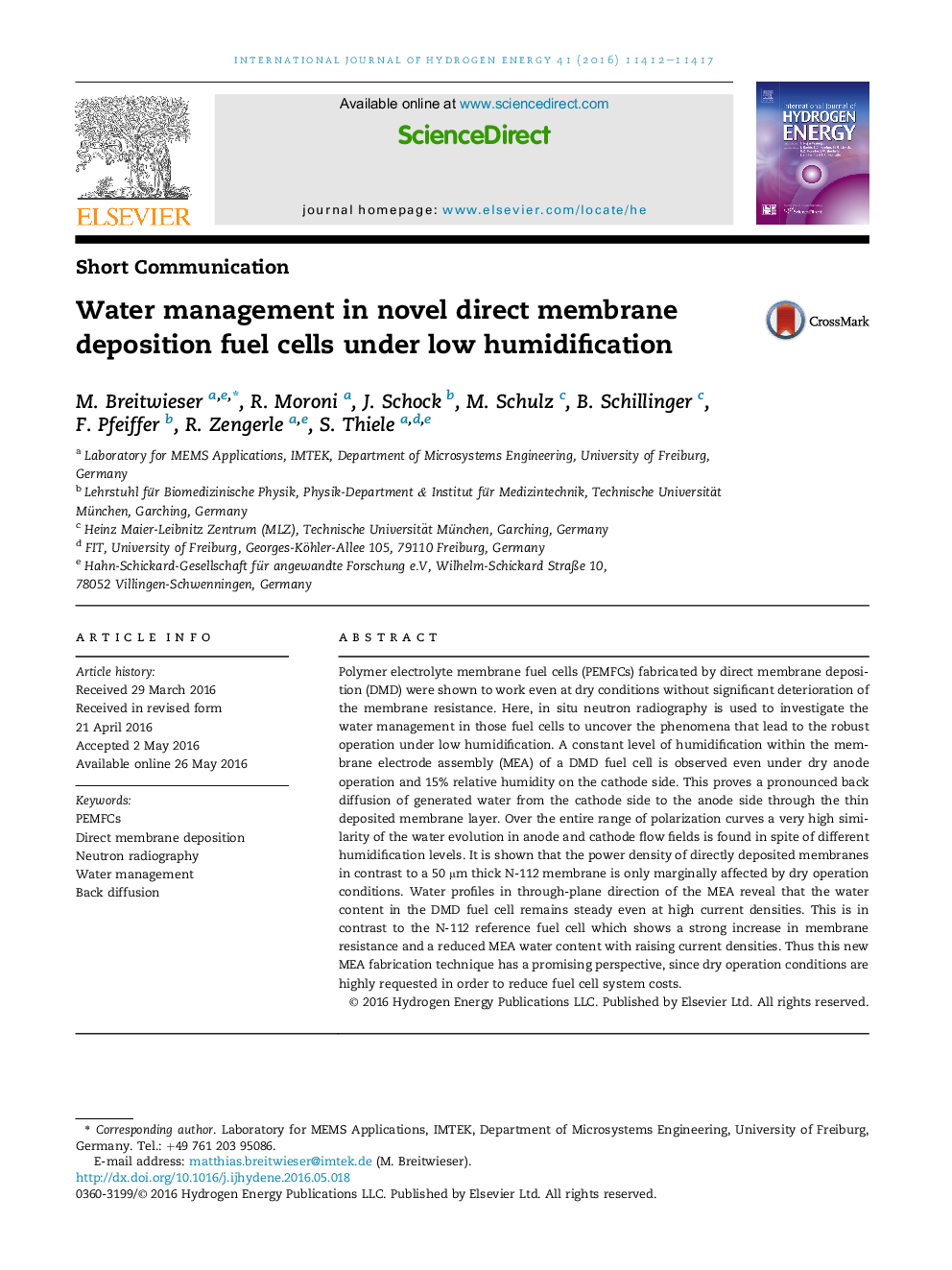| Article ID | Journal | Published Year | Pages | File Type |
|---|---|---|---|---|
| 1269573 | International Journal of Hydrogen Energy | 2016 | 6 Pages |
•A PEMFC with thin directly deposited membrane is investigated with neutron radiography.•The DMD fuel cell is compared to a fuel cell with 50 μm thick N-112 membrane.•The low ionic resistance of DMD fuel cells is enabled by cathode water back diffusion.•Low ionic resistance and water evolution of DMD fuel cells are correlated.
Polymer electrolyte membrane fuel cells (PEMFCs) fabricated by direct membrane deposition (DMD) were shown to work even at dry conditions without significant deterioration of the membrane resistance. Here, in situ neutron radiography is used to investigate the water management in those fuel cells to uncover the phenomena that lead to the robust operation under low humidification. A constant level of humidification within the membrane electrode assembly (MEA) of a DMD fuel cell is observed even under dry anode operation and 15% relative humidity on the cathode side. This proves a pronounced back diffusion of generated water from the cathode side to the anode side through the thin deposited membrane layer. Over the entire range of polarization curves a very high similarity of the water evolution in anode and cathode flow fields is found in spite of different humidification levels. It is shown that the power density of directly deposited membranes in contrast to a 50 μm thick N-112 membrane is only marginally affected by dry operation conditions. Water profiles in through-plane direction of the MEA reveal that the water content in the DMD fuel cell remains steady even at high current densities. This is in contrast to the N-112 reference fuel cell which shows a strong increase in membrane resistance and a reduced MEA water content with raising current densities. Thus this new MEA fabrication technique has a promising perspective, since dry operation conditions are highly requested in order to reduce fuel cell system costs.
